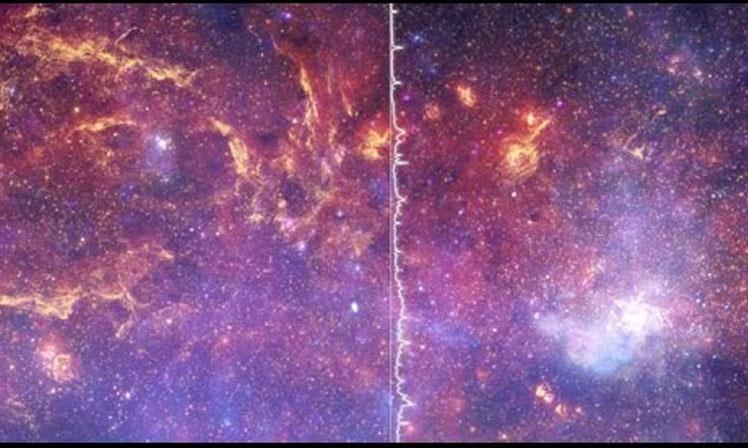
NASA releases cosmic sights that can even be heard. Here's what it sounds like
14-October-2020
The center of our Milky Way galaxy is too distant for us to visit in person, but we can still explore it. NASA's Hubble Space Telescope has released sound recordings from space. According to the American space agency, Hubble has released cosmic sights that can be experienced with other senses as well. Hubble now allows us to see what the Galactic Center looks like in different types of light. By translating the inherently digital data (in the form of ones and zeroes) captured by telescopes in space into images, astronomers create visual representations that would otherwise be invisible to us.
Through data sonification, the same digital data that gets translated into images is transformed into sound, NASA said.
"Elements of the image, like brightness and position, are assigned pitches and volumes," NASA said, adding, "Each translation below begins on the left side of the image and moves to the right."
Explaining the sound recordings, the space agency said the sonifications provide a new way of experiencing and conceptualizing data.
"Sonifications allow the audience, including blind and visually impaired communities, to listen to astronomical images and explore their data," it said.
To create these sonifications, the Chandra X-ray Observatory team combined their observations with those from the Hubble Space Telescope and the Spitzer Space Telescope, NASA said.
What is sonification?
Sonification is the process that translates data into sound, and a new project brings the center of the Milky Way to listeners for the first time. Stars and compact sources are converted to individual notes while extended clouds of gas and dust produce an evolving drone.
Users can listen to data from this region, roughly 400 light years across, either as "solos" from NASA's Chandra X-ray Observatory, Hubble Space Telescope, and Spitzer Space Telescope, or together as an ensemble in which each telescope plays a different instrument.
Leave a comment: (Your email will not be published)